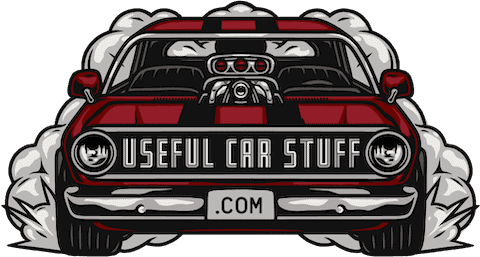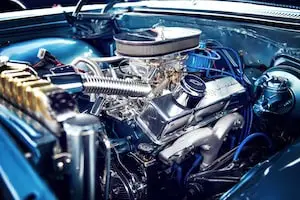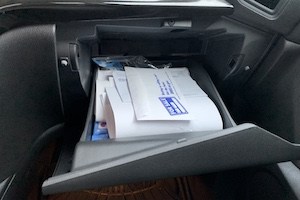Automotive safety has brought us much safer vehicles that protect the driver of a vehicle better than vehicles built in the past in general. But, this new tech comes at a high price point and having primarily driven sturdy old heavy cars because it was what I could afford, I have often wondered why our modern cars seem to destroy themselves to save us and what makes them safer.
Why aren’t old cars made of stronger metal safer than new cars?
Although new cars are built of lighter materials than they used to, modern cars are safer than old cars because of chassis design and the crumple zone that new cars have. The strength gradient implemented in the design of modern cars also have the cars built with thicker materials as you move in towards the passengers creating a safety cage.
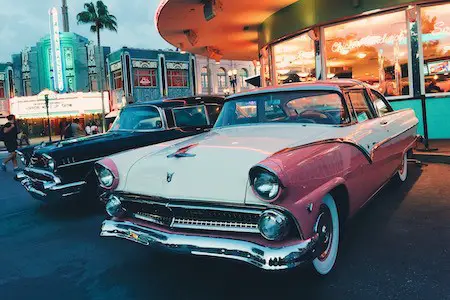
It still seems like we’d be better off with the defense of an old car built like a tank if we were to get in an accident since the modern day vehicle seems to crumble if it hits something as light as a cardboard box, so we’d better explain a few of the main aspects that make new cars safer than the old. There is so much that goes into the safety design of a car it gets complicated and but can be explained with a foundation of knowledge about the main aspects of car safety. Further in this article strength gradient, the crumple zone will be explained.
Chassis Type
In most passenger cars produced today, they are designed with unit-body (or unibody) construction. This is an integrated one piece design that gives the car rigidity to improve responsiveness as well as spread out the impact of an accident.
A chassis of unibody construction is the most common passenger car chassis produced today and this one piece chassis integrates the frame of the car into the body. By tying the frame together in more places it makes it overall stronger while being able to produce it lighter.
Old vehicle chassis were often originally built using a stamped-steel-chassis-design. This type of design had very little connection points between the front and the rear suspension making the frame less rigid and was really just there to mount the engine and other main components to the car! Although heavy duty and tough, these frames were not tough from all angles and one of the biggest drawbacks was the lack of responsiveness through the frame compared to todays chassis.
Many people update their old car chassis to something more modern to make it more responsive, durable, and improve the suspension geometry of the car.
An article at chevyhardcore.com goes over a lot of the aspects that made old chassis designs weak and ways to improve it and to use some of the present day engineering designs implemented in new cars. It is a concise article but shows with good pictures some of the best aspects of a new chassis as they are put onto old car frames.
Crumple Zone
The crumple zone is that part of your car that gets crushed very easily so that you don’t. This part of the car is essentially looking for an excuse to break and bend! The idea is that the more of the car that can bend and get crushed, the less energy that will be left over to transfer its way to the passengers in the car.
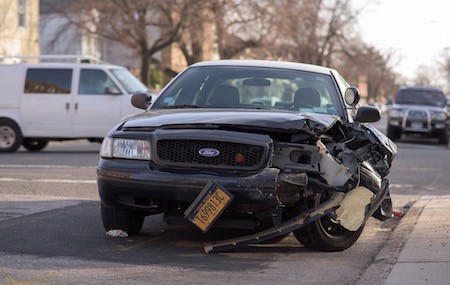
Now, not the entire car is a crumple zone even though it may seem like it if you have been in a minor car accident and experienced major car damage.
The crumple zone is where most of the energy of a car crash is absorbed into. Just like the cars in Nascar seem to completely explode except for the cockpit, the part of the car that “explodes” is the crumple zone.
The crumple zone of the vehicle slows down the impact time of an accident and prevents all of the energy from an accident to be transferred to the driver and passengers.
It makes the deceleration of the car much more gradual. Compare the time of impact to the passengers in a vehicle with a crumple zone to that of a car made entirely of high strength steel and the impact would be transferred nearly instantly and would lead to terrible injuries or death.
Chassis Primary Strength Areas (Strength Gradient)
The strength gradient of a vehicle is the gradual change of lighter materials in the “crumple zone” of a car to the very ridged steel frame around the passengers. All of the energy from a car crash must go somewhere and by sacrificing the pretty parts of the car with a crushed fender and broken aluminum frame, the less energy there is left over to be absorbed by the passengers.
The Chassis can be divided into four areas of strength. Exterior-exterior, exterior of the interior, interior, and the safety cage.
Exterior-Exterior of the Vehicle: Bumpers, Fenders and Body Panels
Bumpers today are most commonly made of fiberglass and plastic. Fiberglass fenders and plastic bumpers have a negligible effect on the safety of a car. These are just made of fiberglass or plastic to reduce the weight of the vehicle.
This is what allows four cylinder engines to feel powerful! It is because the car is extra lightweight since the panels are made of light materials. But this is also why when you get in a minor fender bender it costs you hundreds of dollars to repair!
Sadly these are expensive to replace solely because body work is time consuming and expensive.
Exterior of the Interior: Mild Steel Attached to the Frame
This part of the car is here to hold the car together. This is what connects the body panels and the bumpers and fenders to the frame. This is often a part of the car that is expensive to replace and can be damaged in a mild accident.
The exterior of the interior is made up of mild steel to be rigid enough to hold the car together but does not provide significant accident protection.
Interior: The Steel Frame of the Car
The steel frame of the car is designed to take the impact of a bad accident. This part of the frame comes into play if the accident is bad enough. When this part of the frame takes a serious impact, air bags go off, and generally damage is caused to the body panels and critical parts of the frame requiring major repairs.
The steel frame comprises the major form of the chassis and extends throughout the car all the way to the crumple zone. Just inside from the interior frame is the safety cage.
Safety Cage: High Strength Steel
The safety cage is included in the design of the chassis for the terrible accidents that occur occasionally. Here, the toughest heaviest components are used because if these pieces are crumbing in an accident then that means the other layers have been crushed, air bags go off, and this is the last line of defense. The safety cage is made up of vary strong and THICK steel.
With the chassis designed with the crumple zone, strength gradient and the safety cage, it is much more effective at preventing fatal car accidents than the old outdated car frames that used to be produced.
The Downside to Modern Car Chassis
Although the pros outweigh the cons, since modern cars do a better job at protecting the passengers, there are a few cons and they should be included!
New lightweight cars just seem to want to fall apart! These old cars will take a hit for you (literally!) and will get crushed or smashed or even die so that you don’t have to! Such a sweet love story.
When they fall apart, they are expensive to fix!
These crumbly cars easily becomes a salvage vehicle. It just takes a bump in the wrong spot on a car and suddenly you find your insurance declaring the vehicle “totaled”.
